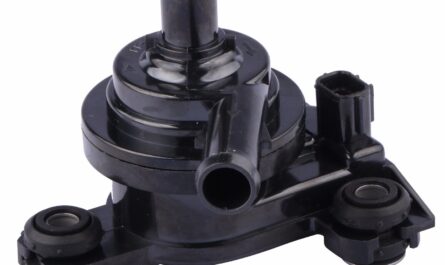The Growth of Automotive Manufacturing in the Region
Over the past few decades, North America has emerged as a major hub for automotive manufacturing. The Big Three automakers – General Motors, Ford, and Fiat Chrysler – dominated vehicle production in the US and Canada for much of the 20th century. However, vehicle assembly operations have expanded significantly. Automakers from Europe, Asia, and other global markets now operate dozens of assembly plants throughout the region.
Mexico in particular has seen enormous growth as an automotive manufacturing center. Low-cost production and its proximity to the US market have made Mexico an attractive location. Today, Mexico is among the top 10 vehicle producing nations in the world. It exports a vast majority of the vehicles it assembles to Canada and the United States.
This manufacturing growth has created complex automotive logistics challenges. Finished vehicles, parts, and components must be transported long distances both within countries and across international borders efficiently. Properly coordinating this elaborate North America Automotive Logistics supply chain is no small task.
Managing International Border Crossings
One of the biggest issues is efficiently moving finished vehicles and parts across the Canada-US and US-Mexico borders. With plants located on both sides, a high volume of truck and rail traffic must traverse these borders every day. Even minor delays at the border can disrupt tightly scheduled delivery routes and assembly line workflows.
Efforts have been made to streamline border processing through initiatives like the Security and Prosperity Partnership and pre-clearance programs. Dedicated commercial lanes and infrastructure improvements have also helped border authorities handle growing traffic volumes. However, congestion and unpredictable inspection times continue causing delays. Geopolitical tensions can also temporarily shut down certain cross-border corridors.
During the Covid-19 pandemic, temporary border restrictions to contain the virus outbreak magnified these challenges. Plant shutdowns occurred when parts were stranded on the wrong side. Maintaining cross-border traffic fluidity is thus paramount for North American automotive supply chain reliability.
Coordinating a Vast Regional Network
Management of the North America Automotive Logistics network requires tremendous coordination. OEMs, suppliers, freight carriers and various stakeholders must work together seamlessly. Finished vehicle and component shipment schedules involving hundreds of plants and distribution centers must be constantly updated in real-time.
Digitalization and data sharing have helped improve visibility across this sprawling system. Yet coordination grows more complex as automakers continue adding capacity in new overseas like Mexico. Maintaining just-in-time deliveries across thousands of miles requires split-second execution of transportation, customs clearance and warehouse operations. Any kink can have rippling effects.
Seamless multi-modal coordination is another issue. Parts and finished vehicles regularly utilize road, rail, air and ocean freight depending on origin-destination pairs. Transloading between truck, rail and marine modes takes place constantly across inland hubs and border crossings. Synchronizing inventory allocations and cutting transit times is critical to optimization.
Sustainable Logistics Practices
Environmental sustainability is also a rising priority. North America Automotive Logistics aims to reduce its carbon footprint through various green logistics initiatives. This includes optimization of transportation routes, increasing deck sizes of rail freight cars, use of fuel-efficient trucks and intermodal trucks. Investments are being made in electric vehicles to reduce emissions from drayage operations.
Suppliers are embracing sustainable packaging designs using recycled/recyclable materials to cut waste. Improved yard management at intermodal facilities through technologies like automated stacking cranes helps reduce fuel consumption. Adopting blockchain to digitally track environmental impacts across the extended supply chain can further drive efficiency and transparency.
The way forward clearly involves continued innovation through advanced technologies, infrastructure investments and regional cooperation. As EV adoption grows and supply chains become more globally distributed, challenges will further intensify for automotive logistics in North America. Stakeholders must work diligently to maintain the competitiveness and future-readiness of this strategically critical industry.
About Author - Money Singh
Money Singh is a seasoned content writer with over four years of experience in the market research sector. Her expertise spans various industries, including food and beverages, biotechnology, chemicals and materials, defense and aerospace, consumer goods, etc. LinkedIn Profile




